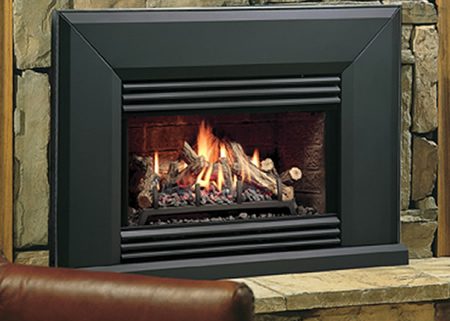Gas Fireplaces vs. Wood Fireplaces: Which Is Right for Your Home?
Are you considering a new fireplace for your home but unsure whether to choose a Gas Fireplace or a Wood Fireplace? You’re not alone. Many homeowners face this dilemma because both options come with their own unique benefits and challenges. Whether you want the classic charm of a wood-burning fire or the modern convenience of a gas-powered option, the right choice for your home depends on various factors. This article will guide you through everything you need to know about Gas Fireplaces vs. Wood Fireplaces, from installation costs to maintenance requirements, helping you make an informed decision.
At Lucky Sully Chimney Sweep, we understand the importance of making the right choice for your home’s comfort and ambiance. Our expert team offers services for both gas and wood-burning fireplaces, ensuring that whichever option you choose, you’ll have a reliable and safe fireplace to enjoy for years to come.
What’s the Difference Between Gas and Wood Fireplaces?
Gas Fireplaces
A gas fireplace operates using either natural gas or propane to create a flame that provides heat. They come in various designs, such as vented or ventless, and offer a modern, clean-burning option for homeowners. One of the key features of gas fireplaces is their ease of use—simply turn on the switch, and you have instant warmth without the hassle of logs, kindling, or ashes. Most gas fireplaces are designed with aesthetic appeal in mind, often featuring realistic ceramic logs or contemporary designs with glass or pebbles.
Wood Fireplaces
In contrast, wood fireplaces are the traditional, classic fireplaces that many homeowners associate with cozy, crackling fires. These require wood logs, kindling, and a chimney for ventilation. Wood-burning fireplaces provide an authentic, rustic atmosphere, with the sound of crackling wood and the scent of burning logs contributing to their charm. However, they require more work and maintenance compared to gas fireplaces, as you need to regularly clean the chimney and ensure the fire burns efficiently.
Understanding the distinctions between these two types of fireplaces is essential to making the right choice for your home.
Cost Comparison: Gas vs. Wood Fireplaces
Initial Installation Costs
When it comes to installation, wood fireplaces can be less expensive upfront if you’re installing them into an existing chimney. If you already have a masonry chimney, the cost to install a wood fireplace can be lower. However, if you need to build a new chimney or venting system, the costs can increase significantly.
On the other hand, gas fireplaces may have a higher initial cost because of the need to install gas lines and possibly a venting system. Depending on the model and design of the gas fireplace, installation costs can vary. However, for homes without a pre-existing chimney or vent system, installing a gas fireplace is often simpler and quicker than installing a wood-burning system.
Both systems have their pros and cons, but ultimately, the choice comes down to your home’s layout and your budget.
Operating Costs and Efficiency
Gas Fireplaces
Operating costs for a gas fireplace are relatively low, especially if you have access to natural gas. Natural gas is typically cheaper than propane, and gas fireplaces are designed for energy efficiency. They provide consistent heat without the need for constant attention. Since gas fireplaces don’t require logs or kindling, you can expect lower maintenance and no need to buy firewood. However, depending on how often you use the fireplace, your gas bill may see some increases.
Wood Fireplaces
Wood fireplaces, on the other hand, come with additional operating costs such as the purchase of firewood and the time needed to prepare and maintain the fire. If you enjoy using the fireplace regularly, firewood costs can add up quickly. Additionally, there’s the time investment involved in starting and maintaining the fire, along with keeping the area clean. This can be a significant factor if you’re looking for a fireplace that doesn’t demand much of your time.
Although the initial costs may be lower, wood fireplaces can end up costing more in ongoing expenses over time.
Maintenance: Gas vs. Wood Fireplaces
Gas Fireplaces Maintenance
The maintenance needs of gas fireplaces are far less demanding. While they do require periodic inspections, including checking gas lines for leaks and ensuring the venting system is functioning properly, the upkeep is minimal compared to wood-burning fireplaces. You may need to clean the glass or ceramic logs occasionally to maintain their aesthetic appearance. Many gas fireplaces also feature easy-to-remove parts that make cleaning simple.
If you want a fireplace that doesn’t require constant upkeep, gas fireplaces are a great choice. You’ll enjoy warmth and ambiance without the hassle of cleaning out ash, soot, or creosote.
Wood Fireplaces Maintenance
In contrast, wood fireplaces demand significant maintenance. After every use, you’ll need to remove the ashes and check for any debris that could impede airflow. The most critical maintenance task is ensuring your chimney is cleaned regularly. Soot and creosote build up in chimneys over time, and if not cleaned, they can become a fire hazard. Additionally, wood fireplaces require inspections to make sure the flue and damper are working correctly.
If you enjoy the ritual of maintaining your fireplace and don’t mind the extra effort, a wood fireplace might be ideal. However, keep in mind the ongoing maintenance required to keep it running safely.
Environmental Impact: Gas vs. Wood Fireplaces
Gas Fireplaces
In terms of environmental impact, gas fireplaces are the greener option. They produce fewer emissions than wood fireplaces, which release carbon dioxide, particulate matter, and other pollutants. Since gas is a cleaner-burning fuel, you won’t have to worry about air quality issues in your home or in the surrounding environment. If you’re environmentally conscious, a gas fireplace is the more sustainable choice.
Wood Fireplaces
Although the warmth and comfort of a wood fireplace are unparalleled, they are less environmentally friendly. Burning wood releases carbon dioxide and particulate matter into the atmosphere, contributing to pollution. In some areas, wood burning is regulated due to air quality concerns. However, using sustainably sourced wood and ensuring that your fireplace is equipped with a high-efficiency wood stove can reduce some of the environmental impact.
Convenience and Ease of Use: Gas vs. Wood Fireplaces
Gas Fireplaces
One of the major selling points of gas fireplaces is their convenience. You don’t have to worry about gathering and storing firewood or dealing with the mess of ashes. Simply turn the switch or press a button, and your fire will start instantly. This makes gas fireplaces ideal for those who want the benefits of a fireplace without the added effort. Additionally, gas fireplaces often come with thermostats and remote controls for easy operation.
Wood Fireplaces
Wood fireplaces require much more effort. You have to gather firewood, store it, and set up the fire each time you use the fireplace. While many people love the hands-on aspect of starting a fire, it can be time-consuming and labor-intensive. If you’re looking for something more convenient, a gas fireplace is certainly the better option.
Aesthetic Appeal: Gas vs. Wood Fireplaces
Wood Fireplaces
The charm of a wood fireplace is hard to match. The crackling of the fire, the scent of burning wood, and the ambiance it creates are all part of the appeal. If you want a traditional, rustic fireplace that enhances the overall warmth and character of your home, a wood-burning unit is the perfect choice.
Gas Fireplaces
While gas fireplaces may not offer the same traditional charm, they do provide a modern, sleek look that can complement contemporary home designs. With various options for customizing the fire’s appearance, including ceramic logs, glass beads, and stones, a gas fireplace can easily blend into modern decor.
Making the Right Decision: Which Is Best for You?
Choosing between a gas fireplace and a wood fireplace ultimately comes down to your personal preferences and the specific needs of your home. If you want low maintenance, convenience, and efficiency, a gas fireplace is likely the right choice for you. On the other hand, if you’re drawn to the rustic charm, ambiance, and hands-on experience of a traditional fire, a wood fireplace may be your perfect match.
At Lucky Sully Chimney Sweep, we offer a range of services to ensure that both gas and wood fireplaces run safely and efficiently. Whether you’re interested in Gas Fireplace Services or need professional assistance with Wood Fireplace Installation, our experienced team is here to help.
FAQs
Which is more energy-efficient: a gas or wood fireplace?
Gas fireplaces are typically more energy-efficient because they provide controlled, consistent heat with minimal energy loss.
Do gas fireplaces need a chimney?
Gas fireplaces may or may not need a chimney, depending on the type. Vented gas fireplaces require a chimney, while ventless models do not.
How often should I clean my wood fireplace?
You should clean your wood fireplace and chimney at least once a year, preferably before the heating season, to prevent creosote buildup.
Are gas fireplaces safer than wood-burning fireplaces?
Yes, gas fireplaces are generally safer because they produce fewer hazardous emissions and have less risk of causing a chimney fire.
Can I convert my wood fireplace to a gas one?
Yes, it’s possible to convert a wood-burning fireplace to a gas fireplace. However, this typically requires professional installation and modification of the existing chimney system.









